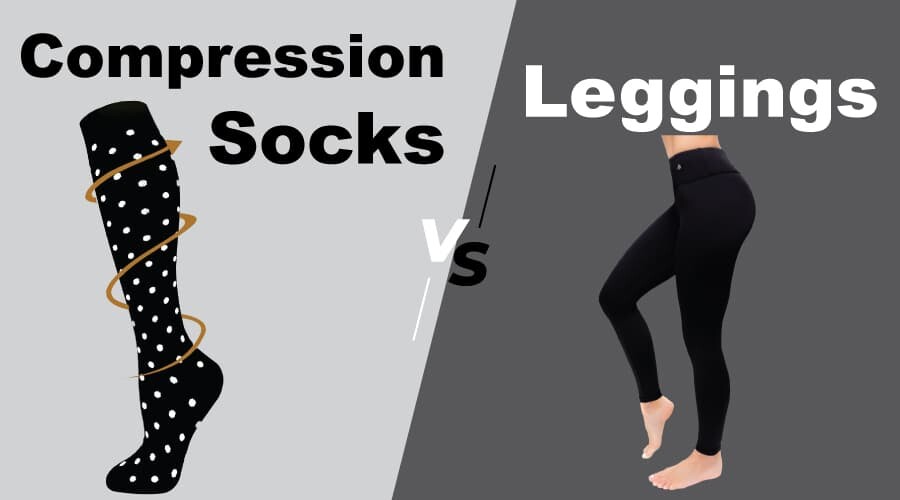So, we all know about compression socks. Did you know that men first wore leggings in the 14th century? If you are a man, you must be wondering how that is possible. Well, according to history, the leggings fashion trend began in modern-day Scotland. Back then, there were two types of leggings, i.e., the boot-like apparatuses and hip-high. Later, they developed into solid garments that men wore with cotehardie. Leggings remained male attire until the early 19th century when women started wearing them.

So much for the history; let’s now look at leggings vs. compression socks. How similar and dissimilar are they?
Where are the differences- Compression Socks Vs. Leggings?
Compression socks and leggings key function is to enhance blood circulation. The only significant difference between these two compression garments lies in their design.
Compression levels
Both compression leggings and socks are available in diverse compression levels. There is no difference in compression pressure between the two garments. That is, the 15-20mmHg legging provides similar pressure as 15-20mmHg compression socks.
Material and design
The significant difference between compression leggings and socks is in their design. For instance, leggings are available in thigh-high and knee-length sizes. Compression socks exist in knee-high and ankle-length. On design, leggings are un-footed while compression socks are closed-toe.
The manufacturers of both compression leggings and socks used elastic and strong materials. They include; polyester, lycra among other blends.
Regular leggings are generally worn for beauty and fashion purposes. Compression leggings and socks help enhance muscle performance and for medical reasons.
Garment function
Compression leggings and socks have similar functions. All are compression attires that aid in promoting blood circulation in the legs. They apply pressure to the leg by compressing the veins. Improved blood flow decreases the risk of varicose veins, blood clots, and other disorders.
Graduated compression socks and leggings are effective in driving blood up the vein. This they do by exerting more pressure at the ankle compared to the knee. The pressure lessens as the garment approaches the waist region. This helpful technique helps the vein to push blood towards the heart.
There are certain types of compression leggings that have different functions. For example, anti-embolism leggings help prevent DVT (Deep Vein Thrombosis). It also helps in the treatment of non-ambulatory patients suffering from pulmonary embolism.
Most doctors recommend this type of legging to bedridden patients. Once the patient recovers, they replace the garment with compression socks.
Parting shot
Lastly, leggings are knee or waist-high, while compression socks are calf or knee-high. Everything else is similar. They both help ease pain, reduce muscle recovery time, and prevent legs swellings. They are also comfortable, stylish and are available in different colours and patterns. So, go with your decision.
